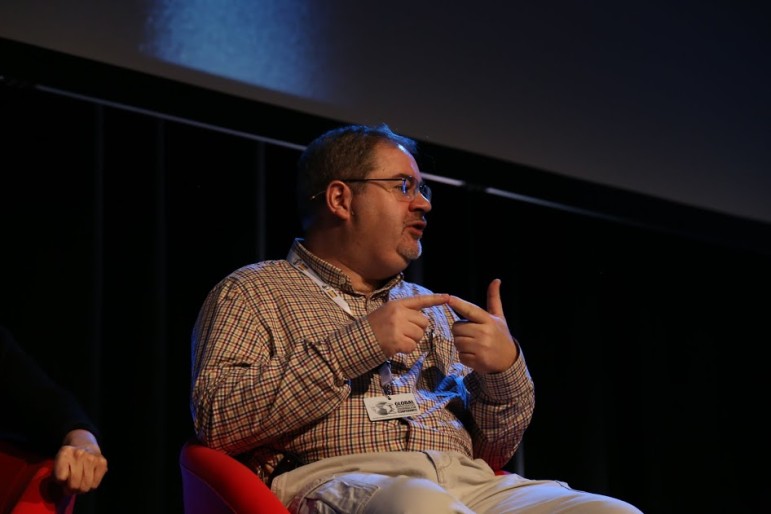
“We do not look at how we can do things better and protect future journalists from dying, and that is a pity”, said Sullivan.
In the last 10 years more than 600 journalists, media workers and social media producers have been killed. Today strategies and concrete actions to ensure journalists’ safety were discussed at the Global Investigative Journalism Conference. Six speakers from around the world shared their thoughts and ideas on how to protect investigative journalists. Among the highlights:
- After 33 years as a journalist, columnist and media trainer to promote free speech and independent media, Rana Sabbagh, executive director at Arab Reporters for Investigative Journalism (ARIJ), is well aware of the danger that journalists and whistleblowers face.
- “Every time a journalist comes to us, we ask them why they want to tell that story. We have to estimate the risk. Nothing is worth losing your life for, and if you die no one will know your story,” Sabbagh said.
- Drew Sullivan, a veteran journalist and media development specialist who has worked many years in Eastern Europe and Eurasia, has worked hard to set up a safety program to train new journalists. According to him the key lies in understanding the threats that you come across and investigate those threats.
- “Nobody has ever come to me and said: hey, do you need any help? I have had to pay from my own pocket to get my reporters removed when they were in great danger. Editors and news organizations have to take more responsibility to protect the lives of their reporters.”
Anna Schiller, a communications strategist for International Women’s Media Foundation (IWMF) is one of the developers behind “Reporta”, a new app that was launched a week ago as an attempt to empower journalists working in potentially dangerous conditions.
“We wanted to look at concrete ways of helping journalists. “Reporta” is not necessarily going to save your life, however with a touch of a button you can easily tell people your location,” she said.
How does “Reporta” work?
- Check-in system, where you can let people know where you are and that you are safe. The app reminds you to hit the check-in button, which is a part of the security control.
- Customized Alerts which can include audio, video and photos when the journalists are at risk.
- SOS-button. If you push this button your contacts will get a message before the app locks itself to prevent unwanted access from people. A bad guy could not unlock it. Note: you have to hold the sos-button for three seconds.
This summer three hundred journalists tested the pilot program for the app. It also comes in six different languages. However, the app has received criticism for not being safe enough.
Schiller said that she is thankful for the feedback received and has already made adjustments to make the app better encrypted.
“It is very important that journalist know about risk calculation. A lot of accidents occur when people underestimate the situation they are in. The app is a great idea, and I got at least five ideas at the conference that I would like to look closer at when I go back.”
Sullivan complimented the creators of “Reporta”, but added that it is important to make sure that the system is safe from hacking.
“It depends who your threat is, you must know who is after you. Otherwise you are throwing your life at great risk.”
Olivia Knudsen & Emilie Gjengedal Vatnøy are journalism students at the University College of Volda who are on special assignment covering #gijc15.

